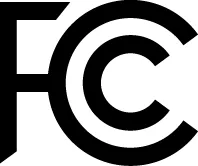Some of our readers may be surprised to hear that the US has not yet fully converted to digital broadcast. While full-power analog television station transmissions in the US ended in 2009, the statutory deadline did not apply to low-power television stations, a service created in 1982 by the Federal Communications Commission (FCC) to allocate channels for smaller, local stations and community channels, such as public access stations.
 There are more than 2,450 licensed low-power television (LPTV) stations in the U.S., which include broadcast translators, boosters and other stations. In 1998, the Commission affirmed its decision to retain secondary status for low power television (LPTV) stations.
There are more than 2,450 licensed low-power television (LPTV) stations in the U.S., which include broadcast translators, boosters and other stations. In 1998, the Commission affirmed its decision to retain secondary status for low power television (LPTV) stations.
In 2011, the FCC adopted a hard deadline of September 1, 2015 for the termination of all analog low power television facilities, while at the same time permitting those stations needing additional time to complete their digital transition to obtain a “last minute” extension. Then, in October of 2014, the Commission released a Third Notice of Proposed Rulemaking (NPRM), seeking comment on measures to facilitate the final conversion of LPTV and TV translator stations to digital service.
Earlier in 2014, the FCC put rules (i.e., regulations carrying the weight of Federal law) in place to implement the broadcast television spectrum incentive auction authorized by the “Spectrum Act” of 2012. As part of the incentive auction, the Commission decided to reorganize or “repack” the broadcast television bands, in order to free up a portion of the ultra-high-frequency (UHF) band for “new flexible uses” – which are expected to bring into the federal coffers billions of dollars from new players like the mobile carriers.
That auction is now putting pressure on the LPTV stations to give up their analog channels, with the option of converting to digital. But the stations are arguing that they may have to move twice, if in fact they are forced to convert to digital before the auctions take place. Thus, they are asking for an extension of time to convert, so that they don’t have the added complication and expense.
Along with the LPTV issues of the 3rd NPRM, the FCC has also proposed a change to Part 15 of the FCC Rules that would eliminate any obligation to integrate analog tuners in TV receivers. Part 15 currently provides that “TV broadcast receivers shall be capable of adequately receiving all channels allocated by the Commission to the television broadcast service.” The FCC reads the term “TV broadcast receiver” as including “devices, such as TV interface devices and set-top devices that are intended to provide audio-video signals to a video monitor, that incorporate the tuner portion of a TV broadcast receiver and that are equipped with an antenna or antenna terminals that can be used for off-the-air reception of TV broadcast signals…” Thus, the Commission considers both display-oriented TVs as well as certain set-top boxes to be “TV broadcast receivers.”
Issued in 1962 after lobbying by the broadcast industry, the All-Channel Receiver Act allowed the FCC to require that all television set manufacturers must include UHF tuners, so that new UHF-band TV stations on channels 14 to 83 could be received by the public. The Commission had already issued a rule requiring forward-compatibility in devices by 2007, which stated that all televisions and all interface devices that include a tuner (VCR, DVD player/recorder, DVR) must include a built-in ATSC DTV tuner. Now, the Commission is proposing to drop the backward-compatibility requirement, after various set manufacturers have already requested and received waivers from the rule, arguing that some set-top boxes no longer required an analog tuner.
DTV manufacturers and the CEA have responded to the 3rd NPRM, making the case that fewer and fewer TV stations will be affected, and the time has come to drop the analog tuner requirement as burdensome and adding an unnecessary expense; at the same time, some LPTV interests have disagreed, asking that analog tuners remain in the marketplace until after all LPTV stations have converted to digital.
It is expected that the FCC will issue a ruling sometime soon, before the auctions take place later this year. – Aldo Cugnini
Full disclosure: the author is a consultant to a company that manufactures digital televisions, and has business interests with parties in the LPTV industry.


